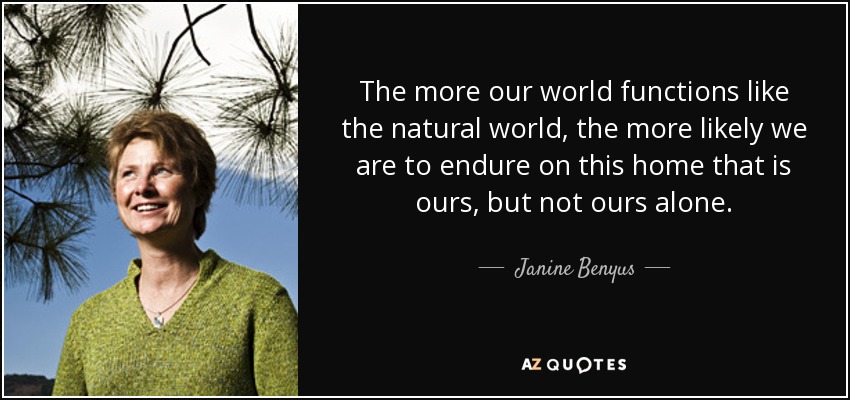
Here's what I wrote in the comments to The world is poorly designed. But copying nature helps.
Barry Commoner's Third Law of Ecology states "Nature knows best." One of the corollaries of Commoner's Second Law of Ecology is "There is no 'waste' in Nature." This video demonstrates both of them.It also touches on Commoner's First Law: Everything is connected to everything else. Watch and see that I'm right about the use of Commoner's Laws in biomimicry.
Japan’s Shinkansen doesn’t look like your typical train. With its long and pointed nose, it can reach top speeds up to 150–200 miles per hour.Benyus also touches on Commoner's Fourth Law, there is no free lunch, in the following quote.
It didn’t always look like this. Earlier models were rounder and louder, often suffering from the phenomenon of "tunnel boom," where deafening compressed air would rush out of a tunnel after a train rushed in. But a moment of inspiration from engineer and birdwatcher Eiji Nakatsu led the system to be redesigned based on the aerodynamics of three species of birds.
Nakatsu’s case is a fascinating example of biomimicry, the design movement pioneered by biologist and writer Janine Benyus. She's a co-founder of the Biomimicry Institute, a non-profit encouraging creators to discover how big challenges in design, engineering, and sustainability have often already been solved through 3.8 billion years of evolution on earth. We just have to go out and find them.

I think she is absolutely right. So do a lot of viewers, as this video is currently #14 on YouTube's trending list.
No comments:
Post a Comment